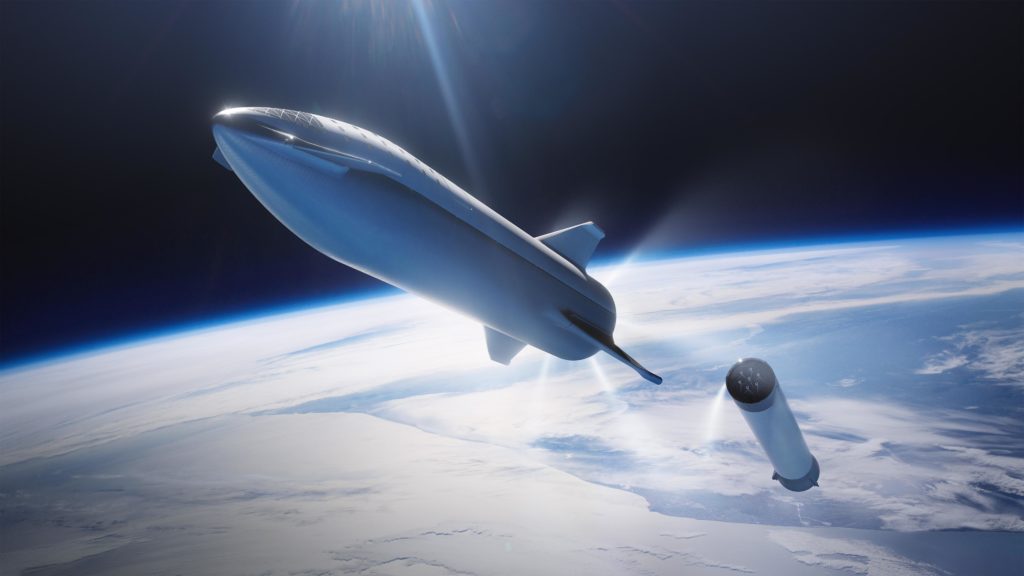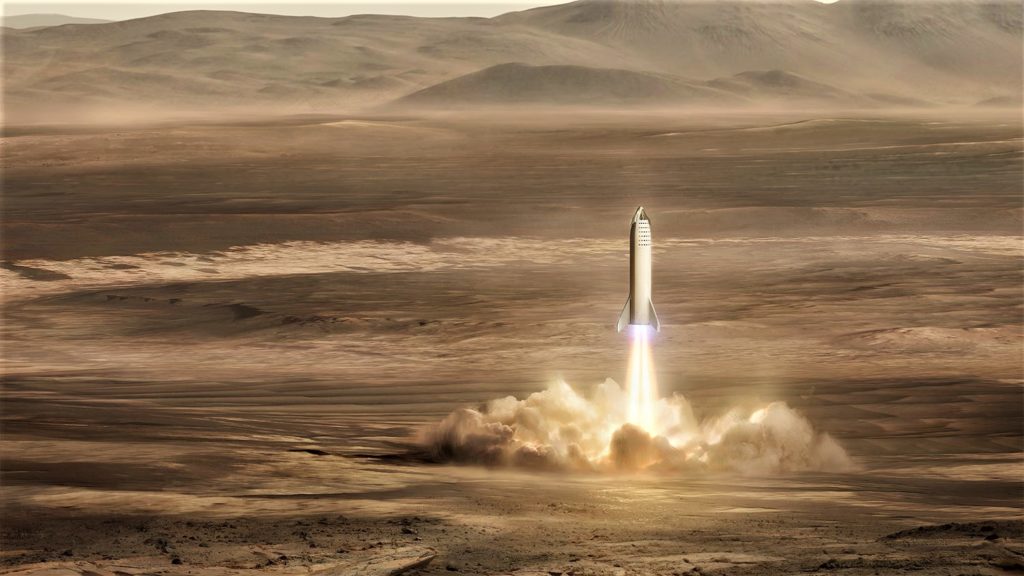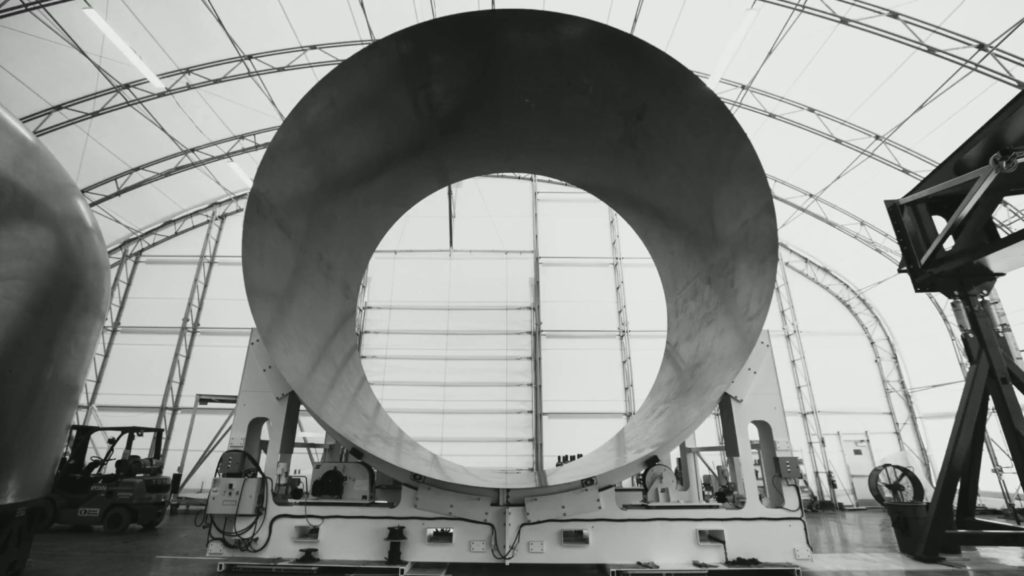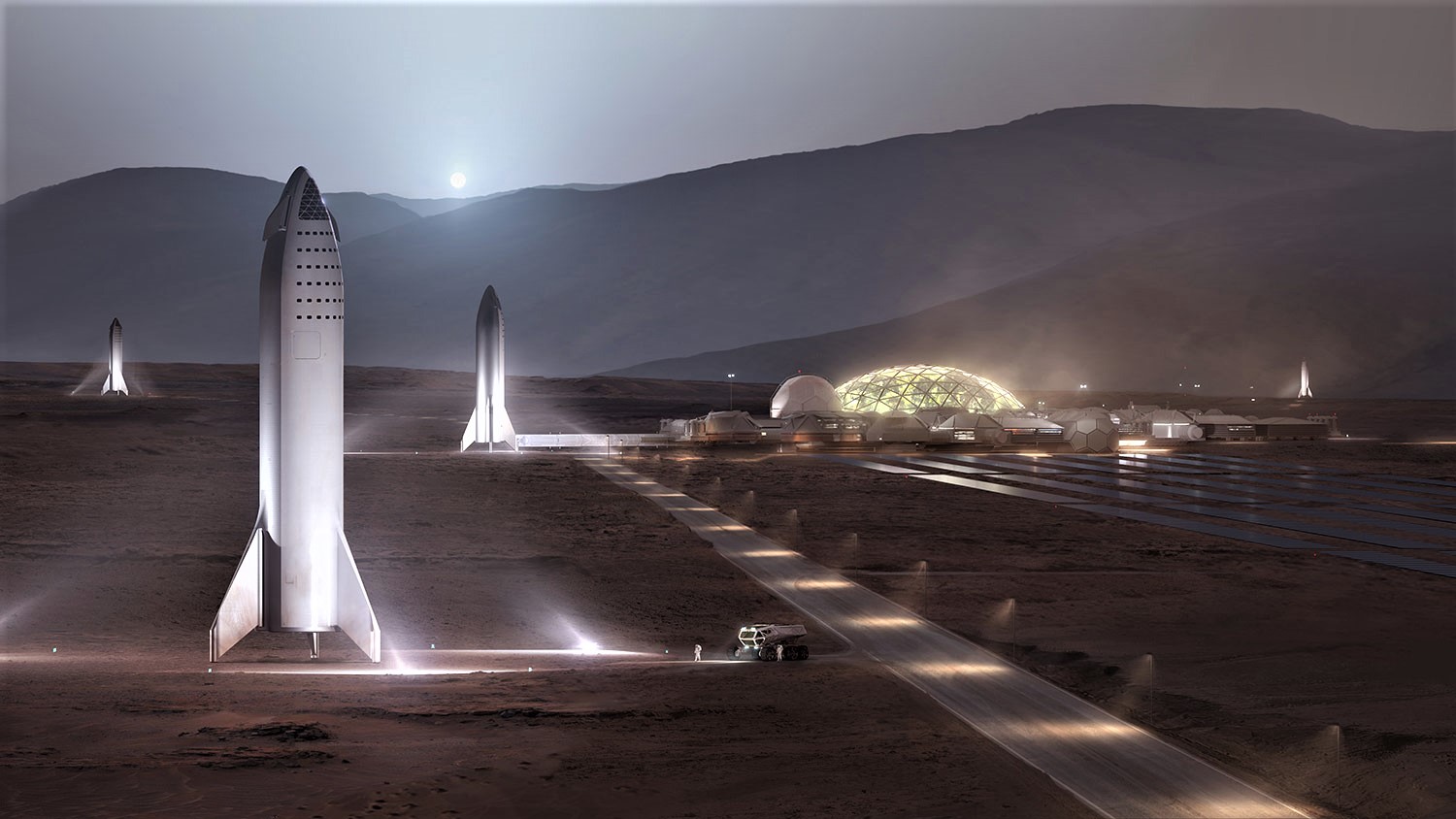
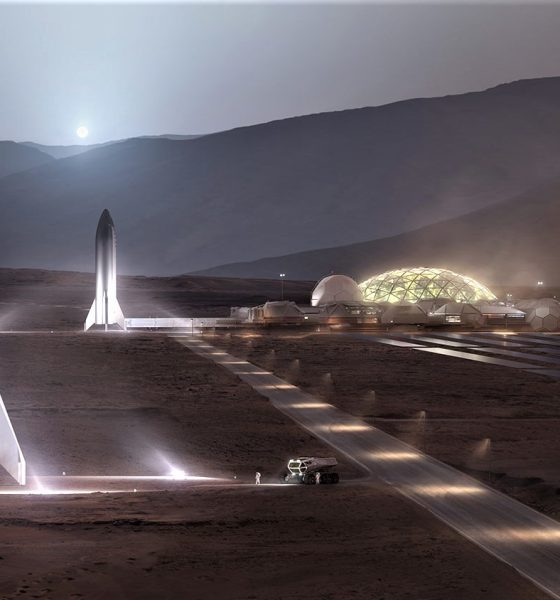
News
SpaceX CEO Elon Musk lays out ambitious deadline for BFR-built Mars Base Alpha
SpaceX CEO Elon Musk has announced what may be the company’s most ambitious deadline yet, stating that he believes a full ‘Mars Base Alpha’ – a preliminary city on the Red Planet – could be completed as soon as 2028.
Mars Base Alpha pic.twitter.com/O1llQp8rFY
— Elon Musk (@elonmusk) September 21, 2018
Probably 2028 for a base to be built
— Elon Musk (@elonmusk) September 21, 2018
In essence, Musk has implied that SpaceX could go from completing the first prototype spaceship segments to a full-fledged Martian city in a decade, a goal that might be even more ambitious than President John F. Kennedy urging – in 1961 – the U.S. to commit itself to landing humans on the Moon “before this decade is out”. In fact, the comparison becomes increasingly apt after examining the finer details of both major proclamations.
For Kennedy’s famous May 1961 speech, NASA had launched its first astronaut ever – and only on a suborbital mission – less than three weeks prior, and would not place an astronaut in orbit for another nine months after that. This was perhaps the boldest aspect of Kennedy’s announcement – he wanted NASA to go from a tiny, suborbital rocket (Mercury-Redstone) to Saturn V – a rocket that could literally place five fully-loaded Redstone rockets into low Earth orbit in a single launch – in well under a decade.
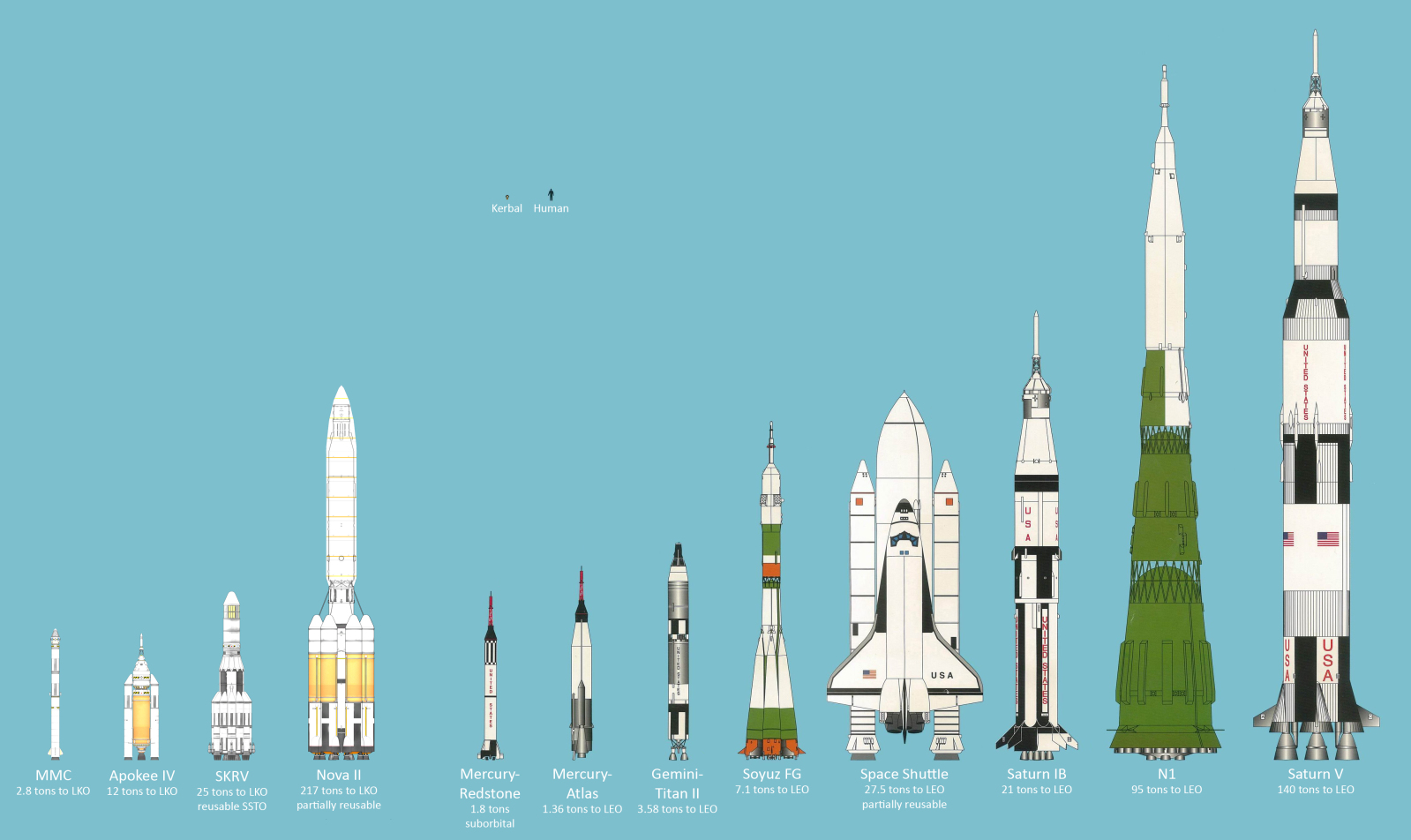
Examining NASA in the early 1960s, the challenges ahead of SpaceX may be quite forgiving in comparison. While NASA had less than three years of experience launching extremely small launch vehicles and placing even smaller (but still pioneering) satellites and space probes into orbit prior to May 1961, SpaceX has a full 60 successful launches of its massive Falcon 9 and Heavy rockets to bastion its expertise, as well more than 30 successful rocket landings and 15 reuses of a number of those recovered Falcon 9 boosters.
In terms of capability and size gaps, SpaceX’s journey from a Falcon 9 or Heavy-sized rocket to BFR is more akin to the Saturn I and IB rockets that preceded Saturn V, the latter of which is shown above. It’s still going to be a massive challenge for the rocket company, particularly with respect to the move from aluminum-lithium propellant tanks to all carbon-composite tanks and structures, but SpaceX arguably has it easy compared to NASA.
- BFR’s booster and spaceship separate a few minutes after launch. (SpaceX)
- An updated spaceship lands on Mars. (SpaceX)
- SpaceX has already completed the first of many carbon-composite sections of its prototype spaceship. (SpaceX)
- Yusaku Maezawa stands on the first BFR composite tank/fuselage section prior to his Sept. 17 announcement. (Yusaku Maezawa)
Massive hurdles still remain for the establishment of any successful Mars base, especially one just a decade from now, with essentially every major component of such a base being a major unknown that needs to be analyzed and solved sometime between now and then. Just as Musk noted in his September 17th BFR update and lunar tourism announcement, he tends to construct schedules from a perspective of everything going right, reasonable in the sense that ambitious targets breed ambitious achievements.
A large Mars Base Alpha with 4+ BFR spaceships landed on the Martian surface by 2028 is undoubtedly entirely dependent upon every conceivable aspect of BFR development going flawlessly over the next decade, an extraordinarily implausible outcome. The need to wait for optimal orbital alignments between Mars and Earth also means that even a few-month-slip could delay Mars launches by nearly two years.
For prompt updates, on-the-ground perspectives, and unique glimpses of SpaceX’s rocket recovery fleet check out our brand new LaunchPad and LandingZone newsletters!

Investor's Corner
SpaceX IPO is coming, CEO Elon Musk confirms
However, it appears Musk is ready for SpaceX to go public, as Ars Technica Senior Space Editor Eric Berger wrote an op-ed that indicated he thought SpaceX would go public soon. Musk replied, basically confirming it.

Elon Musk confirmed through a post on X that a SpaceX initial public offering (IPO) is on the way after hinting at it several times earlier this year.
It also comes one day after Bloomberg reported that SpaceX was aiming for a valuation of $1.5 trillion, adding that it wanted to raise $30 billion.
Musk has been transparent for most of the year that he wanted to try to figure out a way to get Tesla shareholders to invest in SpaceX, giving them access to the stock.
He has also recognized the issues of having a public stock, like litigation exposure, quarterly reporting pressures, and other inconveniences.
However, it appears Musk is ready for SpaceX to go public, as Ars Technica Senior Space Editor Eric Berger wrote an op-ed that indicated he thought SpaceX would go public soon.
Musk replied, basically confirming it:
As usual, Eric is accurate
— Elon Musk (@elonmusk) December 10, 2025
Berger believes the IPO would help support the need for $30 billion or more in capital needed to fund AI integration projects, such as space-based data centers and lunar satellite factories. Musk confirmed recently that SpaceX “will be doing” data centers in orbit.
AI appears to be a “key part” of SpaceX getting to Musk, Berger also wrote. When writing about whether or not Optimus is a viable project and product for the company, he says that none of that matters. Musk thinks it is, and that’s all that matters.
It seems like Musk has certainly mulled something this big for a very long time, and the idea of taking SpaceX public is not just likely; it is necessary for the company to get to Mars.
The details of when SpaceX will finally hit that public status are not known. Many of the reports that came out over the past few days indicate it would happen in 2026, so sooner rather than later.
But there are a lot of things on Musk’s plate early next year, especially with Cybercab production, the potential launch of Unsupervised Full Self-Driving, and the Roadster unveiling, all planned for Q1.
News
Tesla adds 15th automaker to Supercharger access in 2025
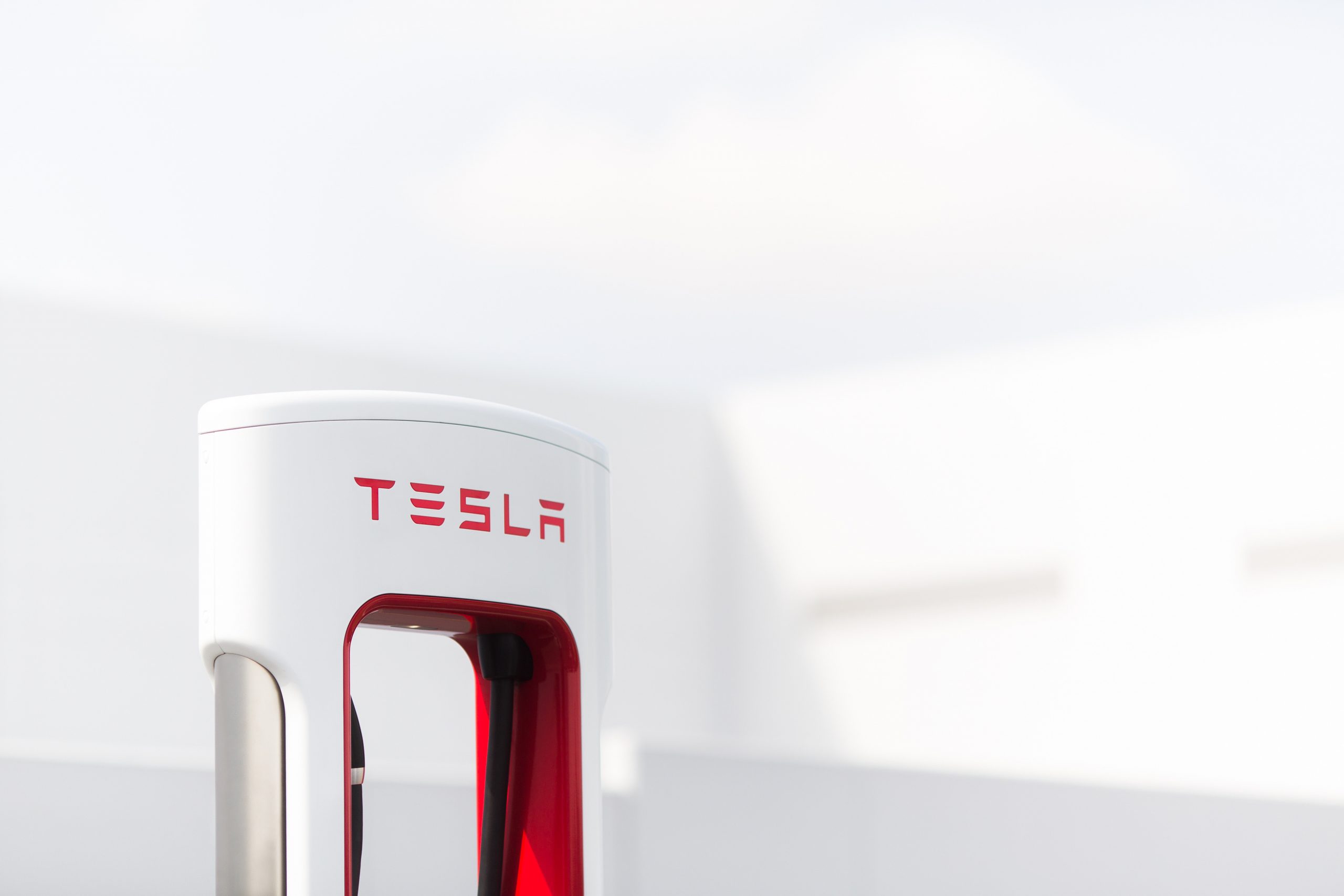
Tesla has added the 15th automaker to the growing list of companies whose EVs can utilize the Supercharger Network this year, as BMW is the latest company to gain access to the largest charging infrastructure in the world.
BMW became the 15th company in 2025 to gain Tesla Supercharger access, after the company confirmed to its EV owners that they could use any of the more than 25,000 Supercharging stalls in North America.
Welcome @BMW owners.
Download the Tesla app to charge → https://t.co/vnu0NHA7Ab
— Tesla Charging (@TeslaCharging) December 10, 2025
Newer BMW all-electric cars, like the i4, i5, i7, and iX, are able to utilize Tesla’s V3 and V4 Superchargers. These are the exact model years, via the BMW Blog:
- i4: 2022-2026 model years
- i5: 2024-2025 model years
- 2026 i5 (eDrive40 and xDrive40) after software update in Spring 2026
- i7: 2023-2026 model years
- iX: 2022-2025 model years
- 2026 iX (all versions) after software update in Spring 2026
With the expansion of the companies that gained access in 2025 to the Tesla Supercharger Network, a vast majority of non-Tesla EVs are able to use the charging stalls to gain range in their cars.
So far in 2025, Tesla has enabled Supercharger access to:
- Audi
- BMW
- Genesis
- Honda
- Hyundai
- Jaguar Land Rover
- Kia
- Lucid
- Mercedes-Benz
- Nissan
- Polestar
- Subaru
- Toyota
- Volkswagen
- Volvo
Drivers with BMW EVs who wish to charge at Tesla Superchargers must use an NACS-to-CCS1 adapter. In Q2 2026, BMW plans to release its official adapter, but there are third-party options available in the meantime.
They will also have to use the Tesla App to enable Supercharging access to determine rates and availability. It is a relatively seamless process.
News
Tesla adds new feature that will be great for crowded parking situations
This is the most recent iteration of the app and was priming owners for the slowly-released Holiday Update.

Tesla has added a new feature that will be great for crowded parking lots, congested parking garages, or other confusing times when you cannot seem to pinpoint where your car went.
Tesla has added a new Vehicle Locator feature to the Tesla App with App Update v4.51.5.
This is the most recent iteration of the app and was priming owners for the slowly-released Holiday Update.
While there are several new features, which we will reveal later in this article, perhaps one of the coolest is that of the Vehicle Locator, which will now point you in the direction of your car using a directional arrow on the home screen. This is similar to what Apple uses to find devices:
Interesting. The location arrow in the Tesla app now points to your car when you’re nearby. pic.twitter.com/b0yjmwwzxN
— Whole Mars Catalog (@wholemars) December 7, 2025
In real time, the arrow gives an accurate depiction of which direction you should walk in to find your car. This seems extremely helpful in large parking lots or unfamiliar shopping centers.
Getting to your car after a sporting event is an event all in itself; this feature will undoubtedly help with it:
The nice little touch that Tesla have put in the app – continuous tracking of your vehicle location relative to you.
There’s people reporting dizziness testing this.
To those I say… try spinning your phone instead. 😉 pic.twitter.com/BAYmJ3mzzD
— Some UK Tesla Guy (UnSupervised…) (@SomeUKTeslaGuy) December 8, 2025
Tesla’s previous app versions revealed the address at which you could locate your car, which was great if you parked on the street in a city setting. It was also possible to use the map within the app to locate your car.
However, this new feature gives a more definitive location for your car and helps with the navigation to it, instead of potentially walking randomly.
It also reveals the distance you are from your car, which is a big plus.
Along with this new addition, Tesla added Photobooth features, Dog Mode Live Activity, Custom Wraps and Tints for Colorizer, and Dashcam Clip details.
🚨 Tesla App v4.51.5 looks to be preparing for the Holiday Update pic.twitter.com/ztts8poV82
— TESLARATI (@Teslarati) December 8, 2025
All in all, this App update was pretty robust.
